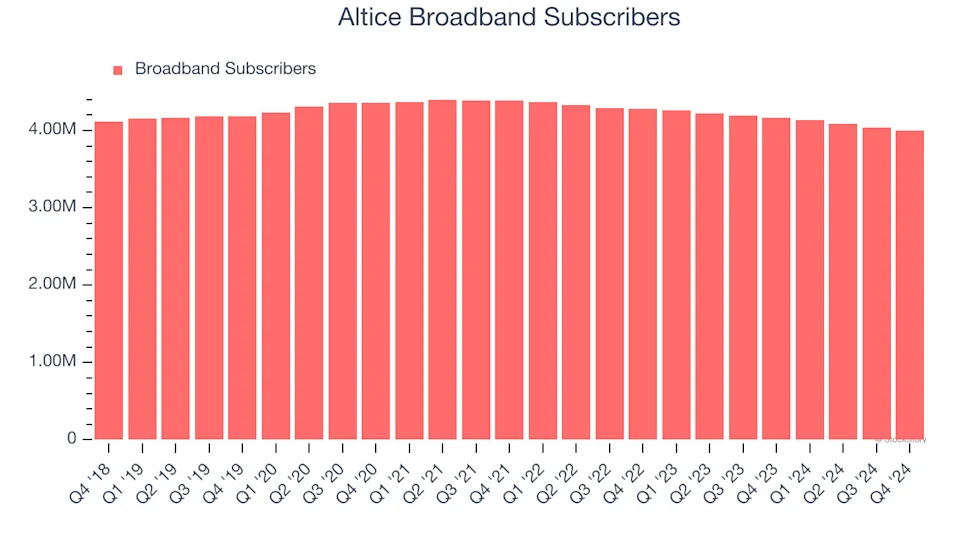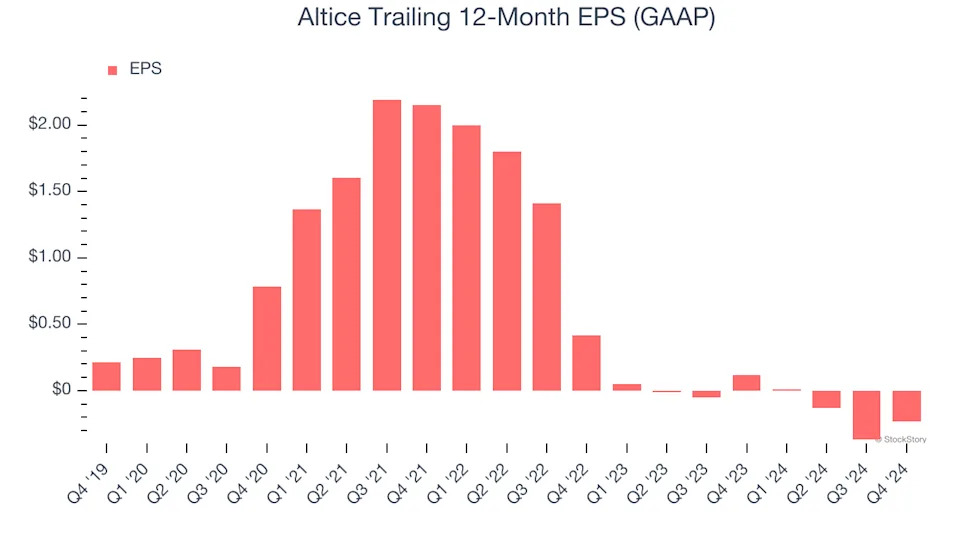
3 Reasons to Avoid ATUS and 1 Stock to Buy Instead

Over the past six months, Altice has been a great trade. While the S&P 500 was flat, the stock price has climbed by 17.4% to $2.57 per share. This performance may have investors wondering how to approach the situation.
Is now the time to buy Altice, or should you be careful about including it in your portfolio? See what our analysts have to say in our full research report, it’s free .
We’re happy investors have made money, but we're swiping left on Altice for now. Here are three reasons why ATUS doesn't excite us and a stock we'd rather own.
Why Do We Think Altice Will Underperform?
Based in Long Island City, Altice USA (NYSE:ATUS) is a telecommunications company offering cable, internet, telephone, and television services across the United States.
1. Decline in Broadband Subscribers Points to Weak Demand
Revenue growth can be broken down into changes in price and volume (for companies like Altice, our preferred volume metric is broadband subscribers). While both are important, the latter is the most critical to analyze because prices have a ceiling.
Altice’s broadband subscribers came in at 4 million in the latest quarter, and over the last two years, averaged 3% year-on-year declines. This performance was underwhelming and implies there may be increasing competition or market saturation. It also suggests Altice might have to lower prices or invest in product improvements to grow, factors that can hinder near-term profitability.

2. EPS Trending Down
We track the long-term change in earnings per share (EPS) because it highlights whether a company’s growth is profitable.
Sadly for Altice, its EPS declined by 25.3% annually over the last five years, more than its revenue. This tells us the company struggled because its fixed cost base made it difficult to adjust to shrinking demand.

3. High Debt Levels Increase Risk
As long-term investors, the risk we care about most is the permanent loss of capital, which can happen when a company goes bankrupt or raises money from a disadvantaged position. This is separate from short-term stock price volatility, something we are much less bothered by.
Altice’s $25.06 billion of debt exceeds the $256.5 million of cash on its balance sheet. Furthermore, its 7× net-debt-to-EBITDA ratio (based on its EBITDA of $3.41 billion over the last 12 months) shows the company is overleveraged.

At this level of debt, incremental borrowing becomes increasingly expensive and credit agencies could downgrade the company’s rating if profitability falls. Altice could also be backed into a corner if the market turns unexpectedly – a situation we seek to avoid as investors in high-quality companies.